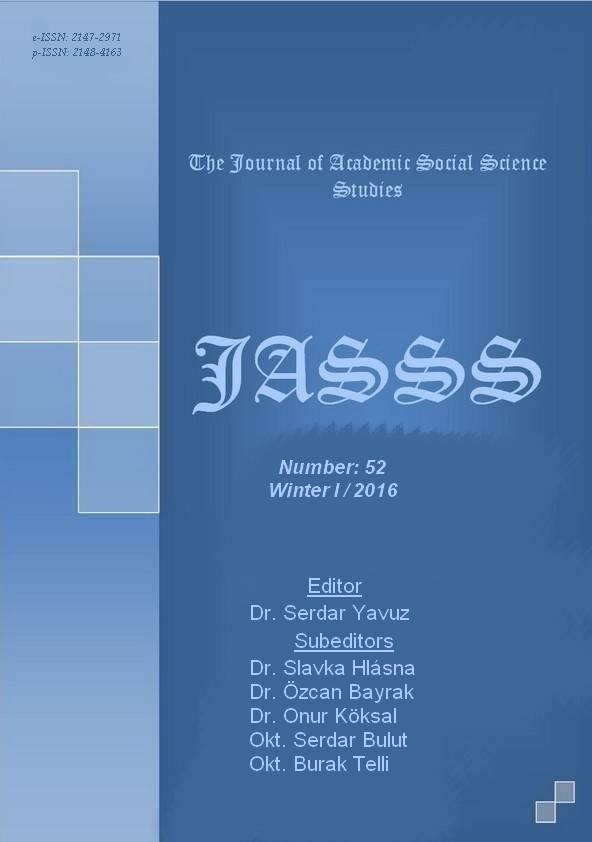Author :
Abstract
Bu araştırmada, resimde mekân kullanımına başlangıç örnekleri olarak Ortaçağ ve Erken Rönesans dönemi resimlerinin sanatçıların resim örnekleri doğrultusunda incelenmesi araştırmanın temel amacını oluşturmaktadır. Betimsel tarama modeli ile gerçekleştirilen araştırmada, Ortaçağ ve Erken Rönesans dönemi ve resimleri ile ilgili genel bilgiler verilerek sanatçıların resimlerinden örnekler ele alınarak incelenmiştir. Araştırmada; Jacapo Torriti, Andrea da Firenze, Giotto di Bondone, Tommaso Masaccio, Paolo Ucello, Piero della Francesca, Andrea Mantegna, Alessandro Boticelli gibi sanatçıların resimlerinden örnekler sunulmuştur. Sanatçıların resimleri, Ortaçağ ve Erken Rönesans sanatçılarının resimlerinden konuya uygun olan örnekler arasından seçilerek incelenmiştir. Sanatçıların resimlerindeki benzerlikler ve farklılıklar irdelenerek yorumlanmıştır. Araştırmada; mekân kavramı, Ortaçağ ve Erken Rönesans dönemi resimleri ile ilgili literatür taraması yapılmıştır. Bu araştırmanın verileri, araştırmanın modeli gereği basılı kaynakların? konuyla ilgili ulusal ve uluslararası yayınlanmış yazınsal ve görsel kaynaklar, ilgili resimlerin incelenmesine dayandırılarak toplanmıştır. Araştırma, Ortaçağ ve Erken Rönesans dönemi resimleri ile sınırlandırılmıştır. Araştırmanın sonucunda, Ortaçağ ve Erken Rönesans dönemi örnek resimlerin mekânına dair incelemeler değerlendirilerek çözümlenmeye çalışılmıştır. Sonuç olarak, Ortaçağ sanatında figürler yüzeysel bir boşlukla kuşatılmış, bu dünyaya ait doğa, perspektif yaklaşımları ve bu yaklaşımların yarattığı bir mekân anlayışı yer almamıştır. Ortaçağ’ın sonlarına doğru Giotto ile birlikte resimlerde mekân artık hacim verilerek görülmeye başlamıştır. Erken Rönesans sanatı ile birlikte mekân; doğanın dış dünyaya ait unsurlardan oluştuğu, doğal figürlerin mekâna dâhil olduğu, derinlik etkisi yaratılan bir anlayışla ilerlemiştir.
Keywords
Abstract
The fundamental purpose of this study to examine the early use of locale in paintings through an examination of painters from the Middle Ages and Early Renaissance periods. Conducted using descriptive survey model, the study provides general information on the Middle Ages and Early Renaissance period and artists of the era, while examining sample works of the artists. The study features examples of the works of artists including Jacapo Torriti, Andrea da Firenze, Giotto di Bondone, Tommaso Masaccio, Paolo Ucello, Piero della Francesca, Andrea Mantegna, Alessandro Boticelli. The artists’ paintings have been selected and examined among sample works of Middle Age and Early Renaissance artists fulfilling the requirements of the subject. The similarities and differences in the works of artists have been examined and interpreted. The study included a literature review on the concept of locale and Middle Ages and Early Renaissance era paintings. The data for the study has been gathered through examination of national and international written and visual resources on the subject and the relevant paintings as per the study model. The study is limited to the paintings of Middle Ages and Early Renaissance periods. The study aimed to evaluate and analyze the examination of locale in sample works from Middle Ages and Early Renaissance periods. Consequently, the figures in the Middle Ages art were surrounded by superficial emptiness without featuring this world’s nature and perspective approaches or the understanding of locale created by such approaches. By the end of Middle Ages, the location in paintings, primarily by Giotto, featured the locale with greater dimensions. With the early Renaissance art, the locale moved towards an understanding where the nature comprises the elements of the outside world, the natural figures are included in the locale, creating a depth effect.





